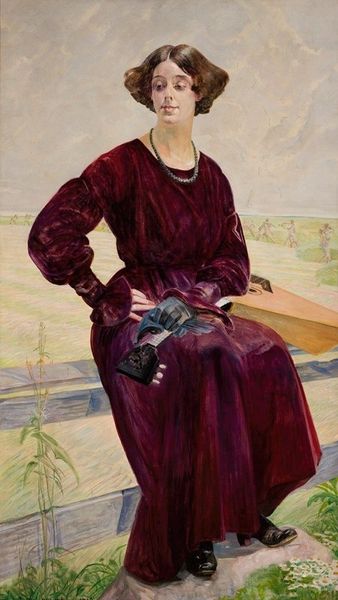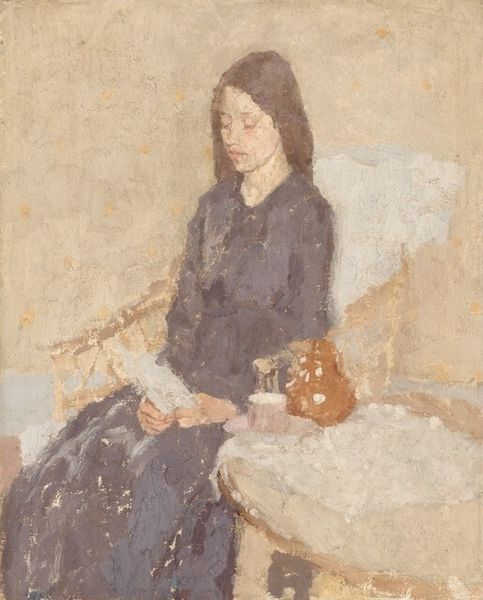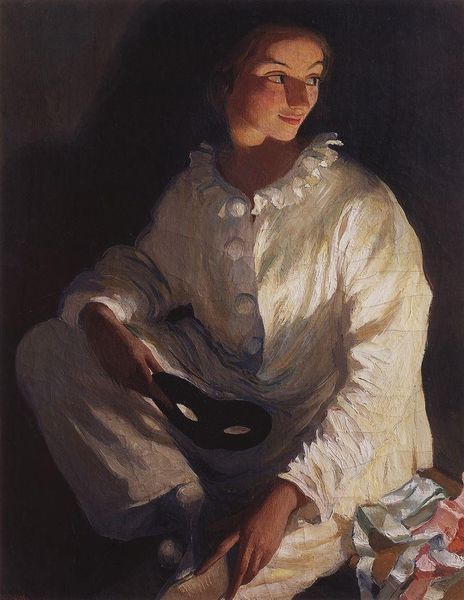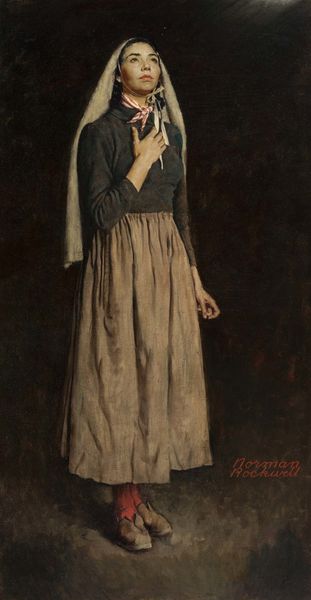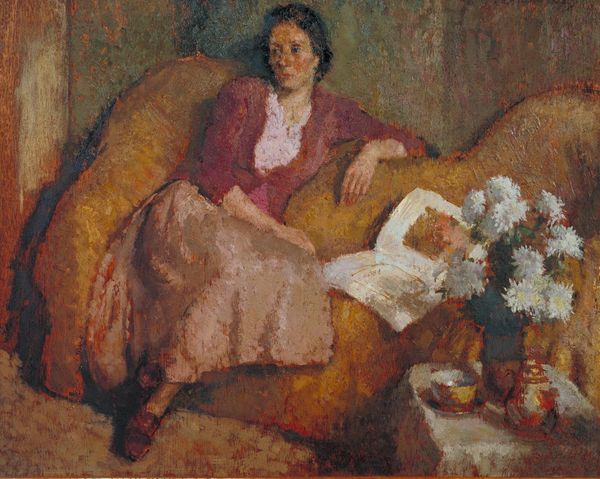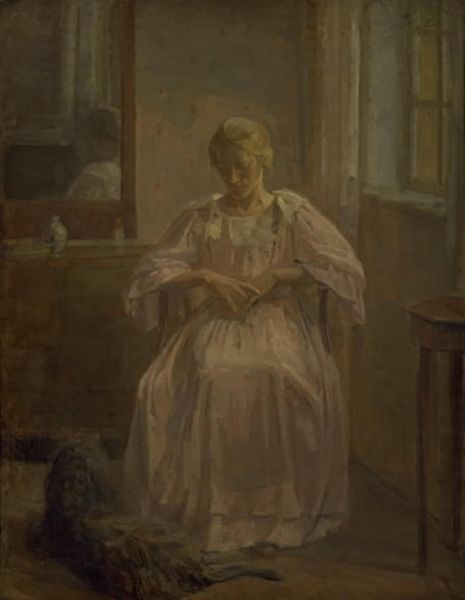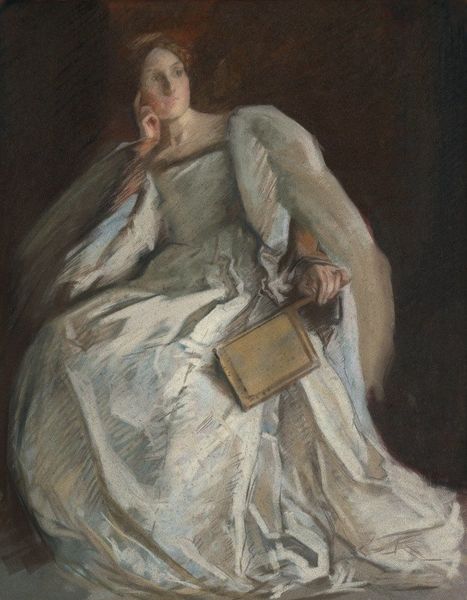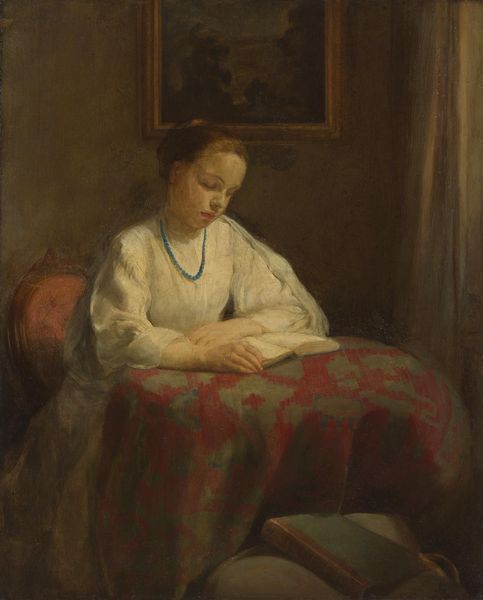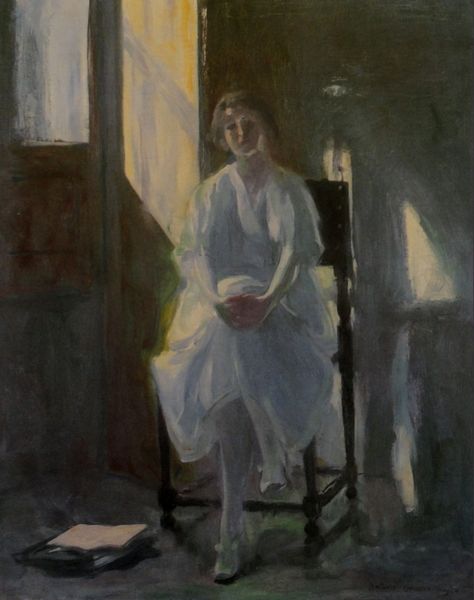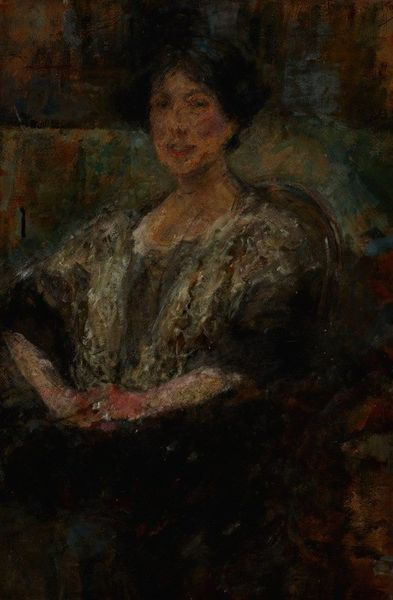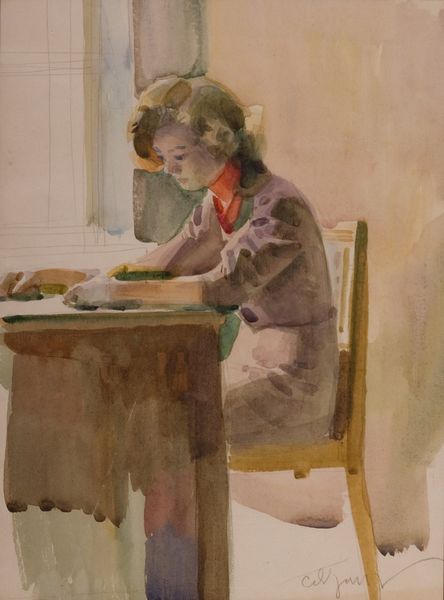
Dimensions: 149.5 cm (height) x 110.5 cm (width) (Netto), 165.8 cm (height) x 126.3 cm (width) x 9.2 cm (depth) (Brutto)
Curator: We are looking at Edvard Weie's 1909 oil on canvas, "Emma Weie, the Artist's Sister", currently held at the SMK, Statens Museum for Kunst. Editor: My first impression is of muted tones and a pervasive sense of stillness, almost melancholy. The limited palette really unifies the composition. Curator: Yes, there's an undeniable serenity, even quietness to this portrait. But it's also important to consider the artist's background. Weie came from a family engaged in craft. His father was a bookbinder and likely, early exposure to this influenced the choice of a realistic style. His focus was directed more on conveying the actualities of life rather than conforming to conventional fine art. The materiality of daily life becomes its own focal point. Editor: Precisely, it avoids grandiosity and centers on everyday authenticity, the earthy palette reinforcing this effect, wouldn't you say? Look closely at the folds and shadows in the clothing. Curator: True. Her attire speaks to societal structures and constraints that existed during that time. This style, this clothing – these weren't simply aesthetic choices, they mirror her station. It grounds her in the tangible reality of her life. Editor: The hands, so deliberately positioned in her lap. What are they saying compositionally? Are they at rest or tense? There is an inner dialogue expressed through these gestures that words alone can't reach. And beyond the hands, note the cool highlights catching on the edges of objects. These precise details shape our perspective entirely. Curator: It pushes past pure surface appearance into a subtle dialogue about existence, and, on a societal level, the limitations on female expression at the time, how women were largely constrained within familial or domestic spheres, often unspoken or unrecognized. Editor: I see. This muted emotional landscape underscores a rich visual dialogue—brushwork and all. The materiality enhances our view significantly. Curator: Indeed. It's fascinating to consider both form and societal context in understanding Weie's painting, giving a rounded perspective that simply concentrating on style or the model may not do. Editor: I completely agree. Examining the convergence of structure, tone, and cultural relevance truly enriches our interpretation. Thank you for these thoughtful ideas.
Comments
No comments
Be the first to comment and join the conversation on the ultimate creative platform.

